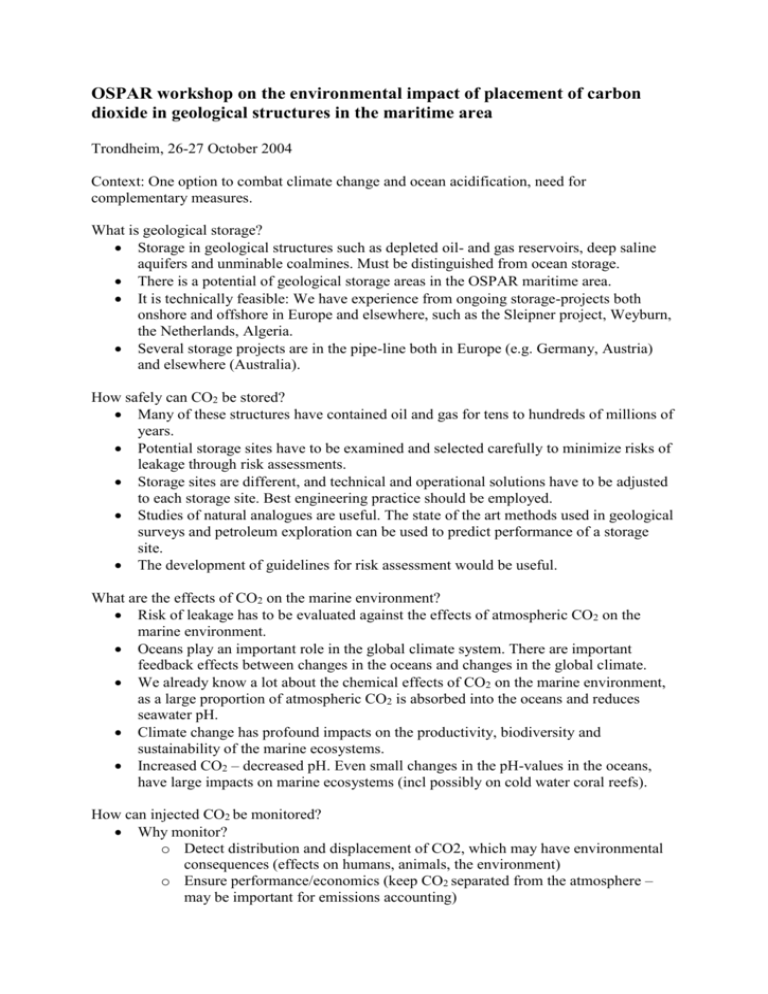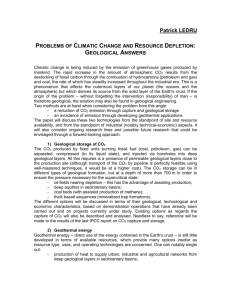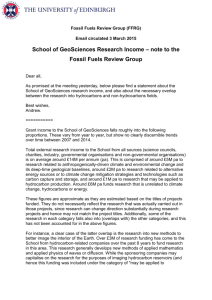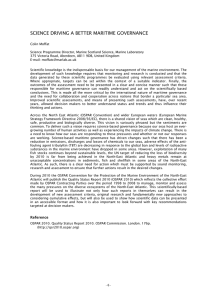conclusions from the workshop
advertisement

OSPAR workshop on the environmental impact of placement of carbon dioxide in geological structures in the maritime area Trondheim, 26-27 October 2004 Context: One option to combat climate change and ocean acidification, need for complementary measures. What is geological storage? Storage in geological structures such as depleted oil- and gas reservoirs, deep saline aquifers and unminable coalmines. Must be distinguished from ocean storage. There is a potential of geological storage areas in the OSPAR maritime area. It is technically feasible: We have experience from ongoing storage-projects both onshore and offshore in Europe and elsewhere, such as the Sleipner project, Weyburn, the Netherlands, Algeria. Several storage projects are in the pipe-line both in Europe (e.g. Germany, Austria) and elsewhere (Australia). How safely can CO2 be stored? Many of these structures have contained oil and gas for tens to hundreds of millions of years. Potential storage sites have to be examined and selected carefully to minimize risks of leakage through risk assessments. Storage sites are different, and technical and operational solutions have to be adjusted to each storage site. Best engineering practice should be employed. Studies of natural analogues are useful. The state of the art methods used in geological surveys and petroleum exploration can be used to predict performance of a storage site. The development of guidelines for risk assessment would be useful. What are the effects of CO2 on the marine environment? Risk of leakage has to be evaluated against the effects of atmospheric CO2 on the marine environment. Oceans play an important role in the global climate system. There are important feedback effects between changes in the oceans and changes in the global climate. We already know a lot about the chemical effects of CO2 on the marine environment, as a large proportion of atmospheric CO2 is absorbed into the oceans and reduces seawater pH. Climate change has profound impacts on the productivity, biodiversity and sustainability of the marine ecosystems. Increased CO2 – decreased pH. Even small changes in the pH-values in the oceans, have large impacts on marine ecosystems (incl possibly on cold water coral reefs). How can injected CO2 be monitored? Why monitor? o Detect distribution and displacement of CO2, which may have environmental consequences (effects on humans, animals, the environment) o Ensure performance/economics (keep CO2 separated from the atmosphere – may be important for emissions accounting) Various methods are available and established technology can be used. Geophysical and geochemical methods are both useful. Also, new and improved methods will be developed. Experience from several projects (Sleipner in the OSPAR maritime area), including the studies of natural analogues, give valuable information. Potential leakage tends to be from isolated spots – faults/fractures and wells.











